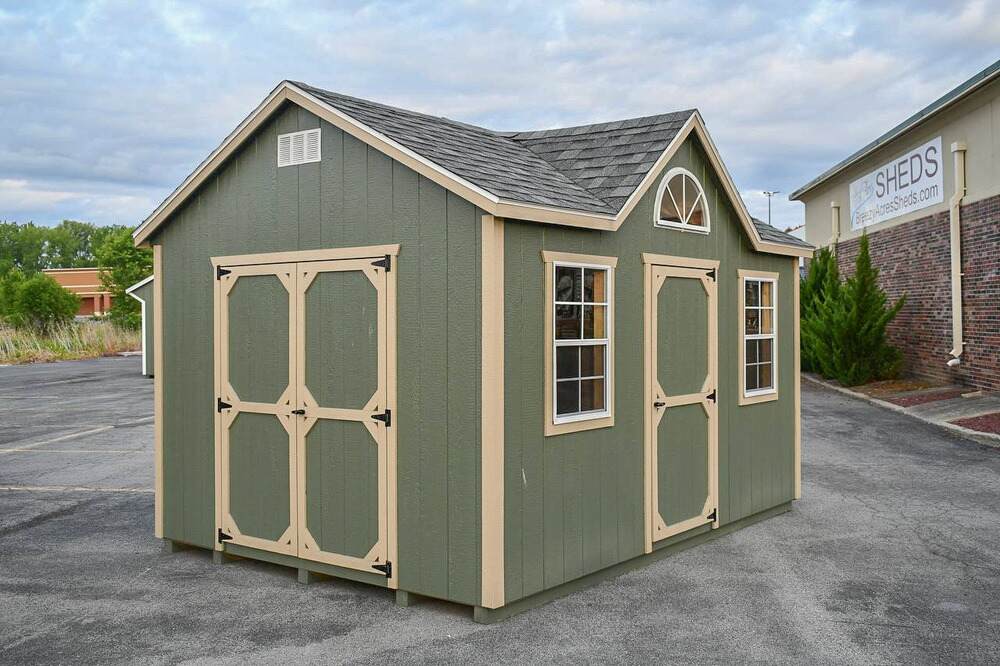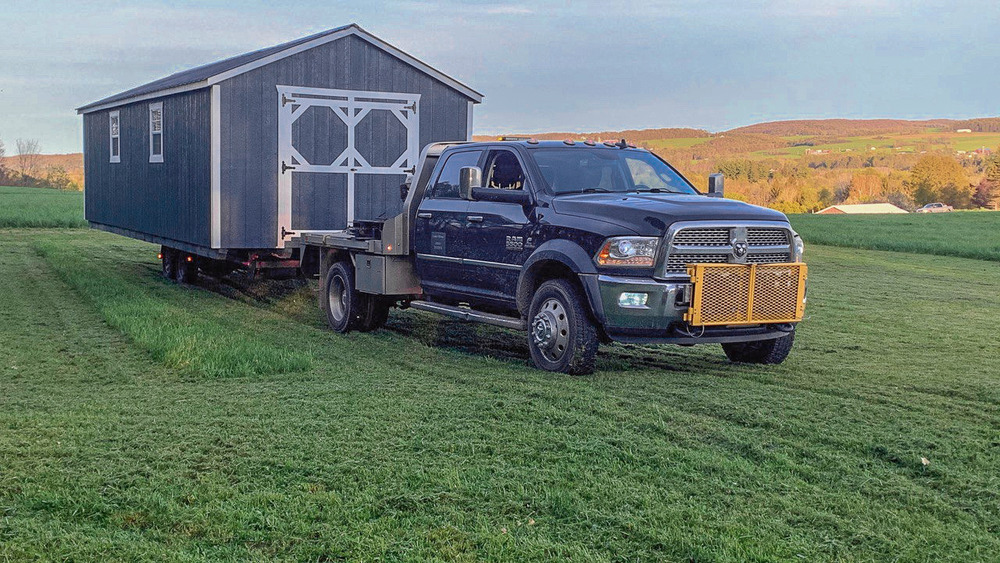
If you need space for your stuff, you’re not alone. Buying a shed is a quick and easy way to get that space. But before you spend your money, spend some time. Think!
To help you, we’ve put together ten questions to ask as you start shopping.
Before picking out your dream shed, you need to know what’s allowed by your local jurisdiction (and HOA, if you have one). These regulations may limit how large a shed you can install, where it can be located, and even its design and the colors you can choose.
There are often property setback requirements and prohibitions about installing sheds in front yards. You may also find requirements for runoff mitigation that could add to the overall project cost.
It’s not a good idea to put a shed directly on the ground, and we don’t recommend using concrete blocks as a substitute for a gravel pad. Remember that a good foundation involves the cost of stone and labor, so don’t forget to budget for this step. Depending on your site, some grading may be needed.
After you’ve checked local requirements, you need to see how much space you actually have. If you have a rough idea of a size, measure out the footprint of the shed where you plan to install it. (Don’t forget— you’ll need a stone foundation for the shed that should extend at least 12” past the shed in all directions.)
Once you’ve determined that you have enough space, make sure that there is room for a fully built shed to be delivered and installed in that spot. Is there a pathway large enough from the road to your shed site? Think about trees, building overhangs, and other obstacles (like septic tanks). Do you have a sloping yard? You’ll need to find out if it will hinder the delivery.
This question can be complicated. Much will depend on why you’re buying the shed. Even with that question answered, it can be hard to visualize how much will fit in a given space.
When considering this, remember that “stuff” tends to grow over time, and that what seems adequate now might feel cramped in a few years’ time. If you’ll be using the shed for storage, think about what you will be storing.
Remember, that for your shed to be functional, you don’t just want everything to fit inside, you want it to be accessible. You’ll need extra space for moving around inside— unless you plan on emptying it when you need something that’s stored in the back!
One helpful way to visualize the size is to sketch out the floor plan and then measure some of the things you’ll be storing. You can do this (the old-fashioned way) on graph paper — this helps keep things to scale. There are also software options for laying out floor plans and inserting objects that are shaped to scale.
After you’ve figured out how regulations and site conditions affect the placement of your shed, think about where your shed makes the most sense for your needs. Consider things like the slope of your ground, how your shed will affect the overall appearance of your property, and potential drainage issues. Think too about the logistics of your location. Will the shed get in the way of something you do routinely? Which way should it face? Where should the doors be?
Our dreams are usually limited by our resources. Once you’ve checked regulations and your site to determine any constraints, you need to figure out how much money you have for the project. When you’re doing this, look beyond the basic price of the shed. Think of sales tax, transportation or installation fees, prep work, and permit costs. Overlooking these expenses can bring an unpleasant surprise to your credit card bill.
Sheds are big investments, and you might be considering how you’ll pay for it. As you consider a shed from Breezy Acres, keep in mind that we offer financing options.

Over time, every shed will take on a life of its own, but most sheds are bought with a specific purpose in mind. If you’re shopping for a shed, you probably already have plans for it. Here are some major uses for sheds, along with some specific considerations and ideas for each.
Sometimes you just need to get things out of a garage or basement. Will you be storing boxes, seasonal recreation equipment, bikes, an artificial Christmas tree? Knowing the size and shape of what you plan to store will help you plan on the kind of shed you purchase.
If you plan to use your shed for working with your plants, you may consider more windows to allow for natural light. You might also want to think about installing a floor that can be easily cleaned up after you’ve dumped that bag of potting soil.
If your shed will be the new home of your mower, snowblower, tiller, or other powered equipment, think about your floor plan. How much space do these things take? Will you need to empty the shed to get something out? Will you need a ramp?
If you need a shed just to hang out and unwind, think about comfort features. You’ll need some elbow room. You’ll also need to consider overhead space for moving around inside.
Will you use this for a hobby, craft, or small business? What kind of equipment will you need? Don’t forget about storage space for materials and tools. And what about electricity and lighting?
Will you use this for writing, for art, for music? If art, think about unique lighting needs you will have. For music? Think about the acoustics and any soundproofing that might be needed.
Knowing why you are buying the shed will help you think about the features that you will want. Some of these are just for looks (aesthetic), while others are functional necessities.
If the shed is just for storage, you probably don’t need electricity, but it’s always nice to be able to turn on a light!
Ducking into the shed on a hot day isn’t so bad if you’re just grabbing some tools, but if you plan to stay inside for long, add more windows! (If you want to later add air conditioning, make sure at least one window is large enough for an a/c unit.)
Choosing a barn-style (gambrel) roof shed will give more head height and will create space for a loft (extra storage with the same footprint!).
Too few, and you may regret it. Too many, and you’ll lose some storage space. So think it through!
Do you want something extra? Something that will really highlight your shed? If so, consider a cupola and weathervane. Want lots of natural light? Ask about skylights or extra windows.

Unless you’re aiming for an ultra-low-budget plastic or metal shed, your shed will be stick-built from dimensional lumber. But you’ll need to make some decisions when it comes to the “skin” of the shed – the siding and roofing.
Some siding options for sheds include wood and vinyl. Wood siding will be cheaper but will not last as long as other options do. Plus, it will need more frequent maintenance to slow down damage from the elements. Vinyl siding is available in many colors and lasts a long time.
Roofing choices are generally between asphalt shingles and metal. There are options even within asphalt shingles, and some of them can last many years. Metal panels will last upwards of 40 years.
There are lots of sheds out there and quality varies. So how can you tell if you are buying a shed that will last for decades? You need to ask the seller about how the shed was built.
At Breezy Acres, we’ve worked hard to maintain our reputation with each shed we sell. Our builder constructs each shed to our durable specifications — we don’t skimp on materials. We stand behind our products.
There’s a lot to consider when buying a shed, but we believe that an investment of time now will save you trouble in the future and pay dividends for years to come.

Download “Quality from the Ground Up: 7 Elements of a Breezy Acres Shed”
By requesting our guide, you agree to receive periodic promotional emails from us.